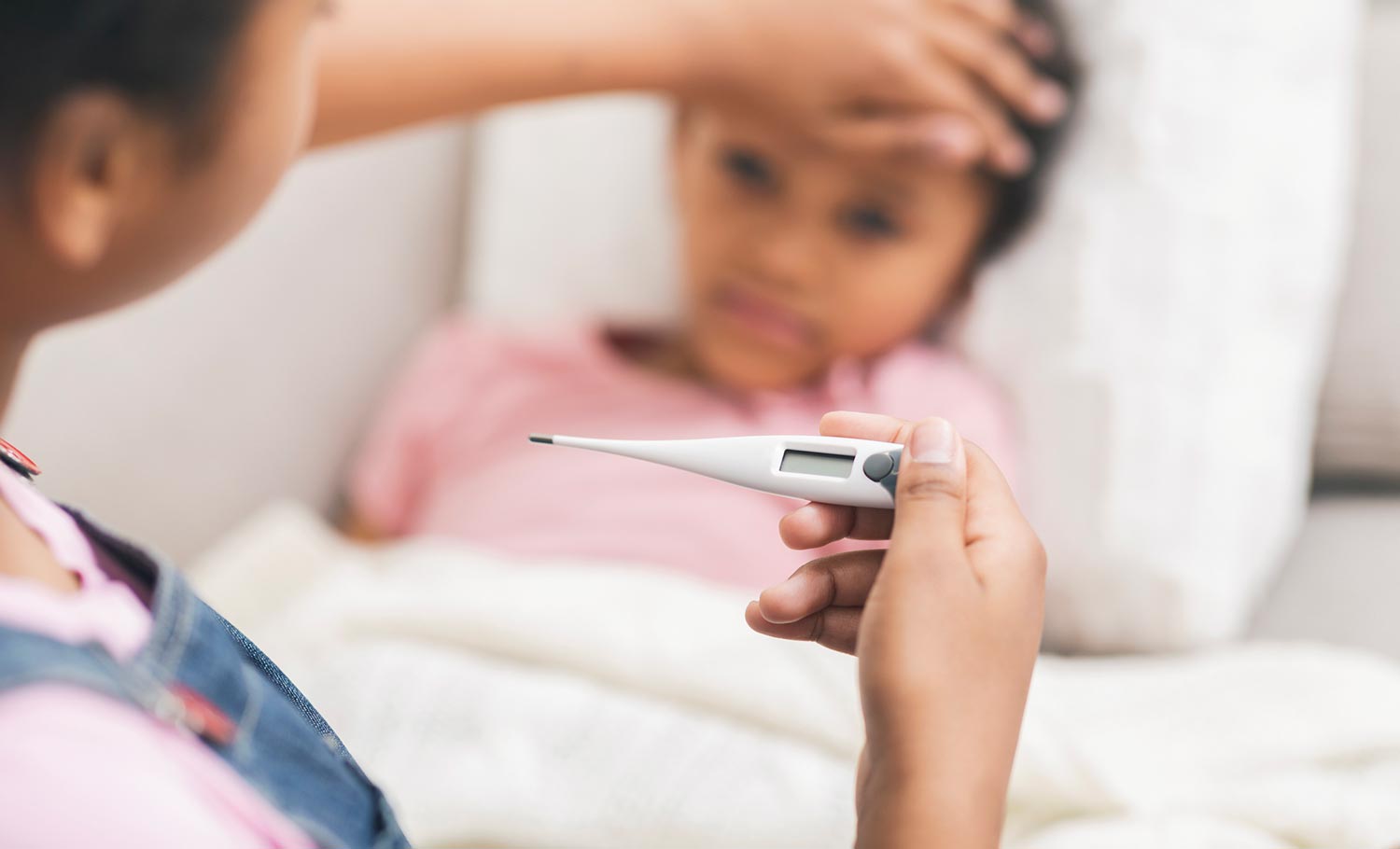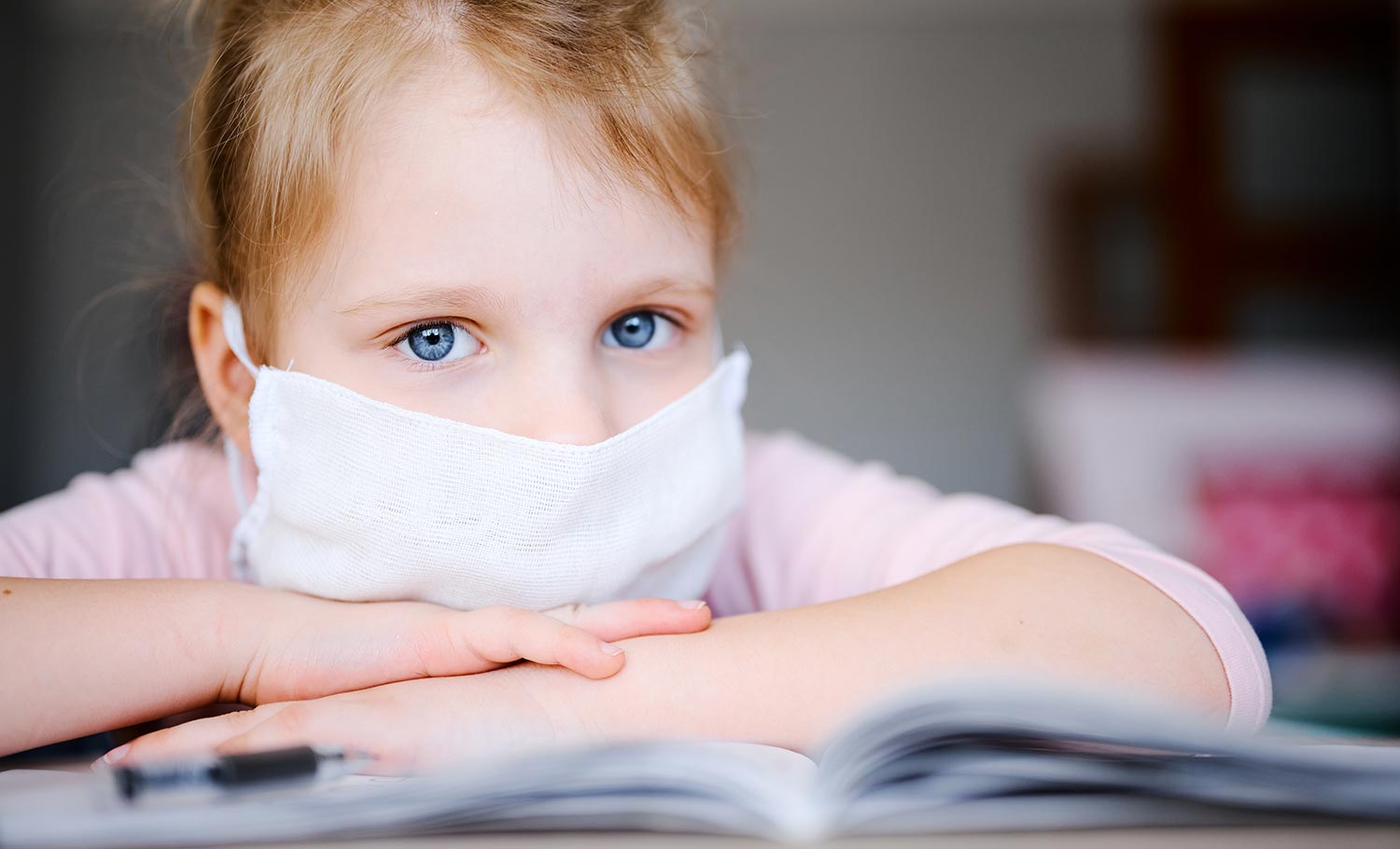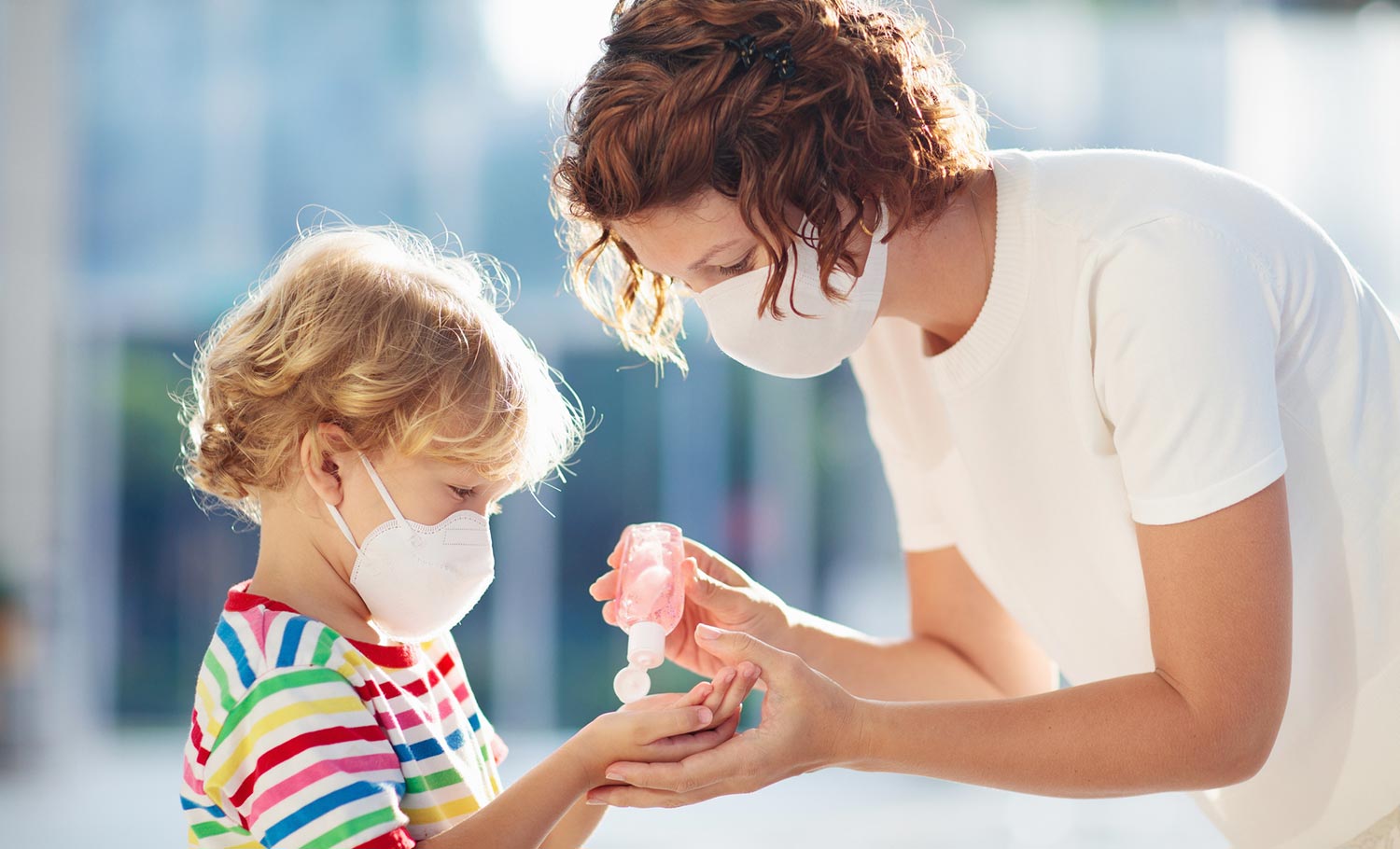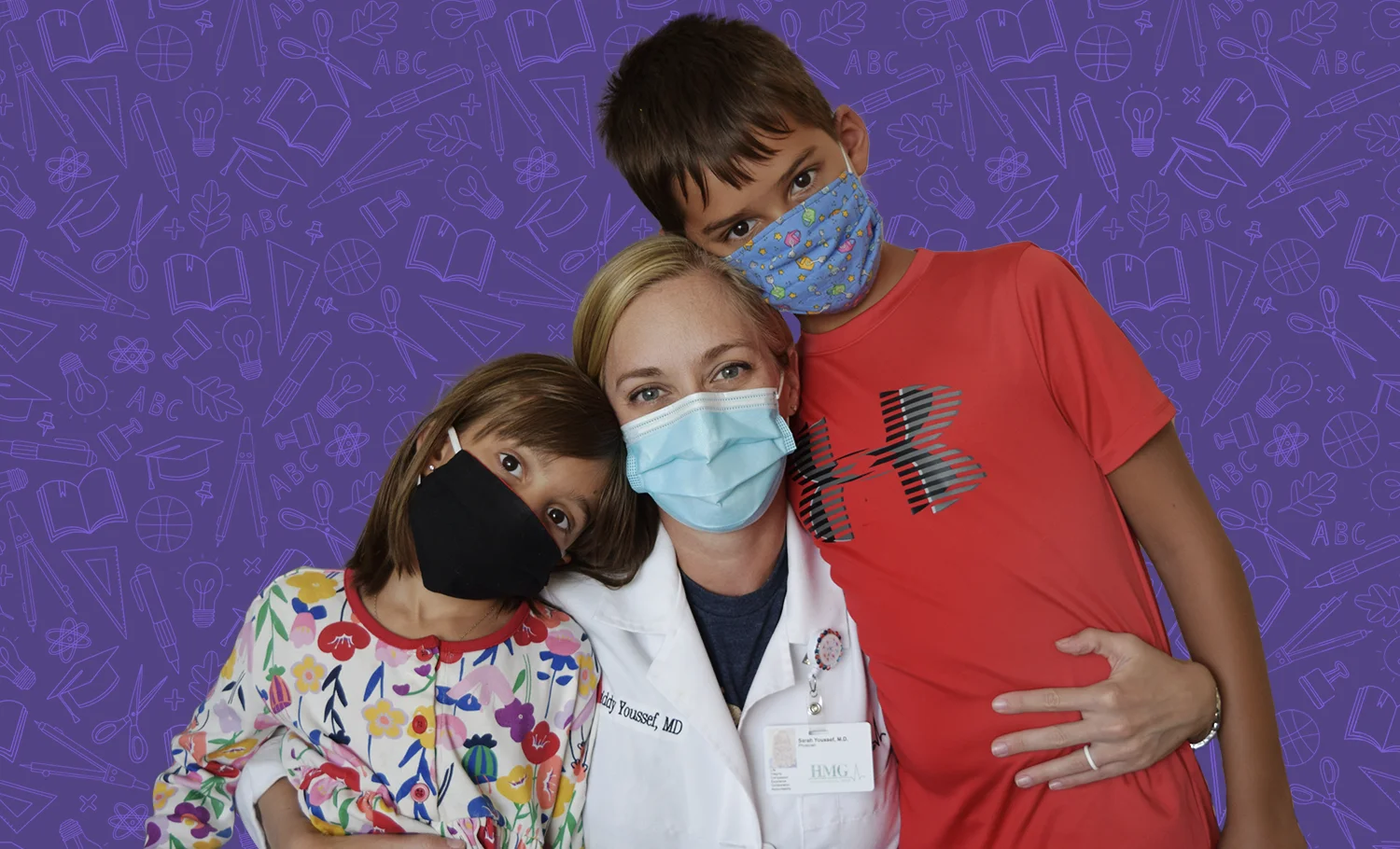As backpacks, glitter pens and folders with animals line the discount store shelves, the excitement of a new school year is dampened by the emotions of sending children to school during a pandemic.
A recent survey shows 66% of parents feel anxious about the start of a new school year. It’s one reason why many families are slow to start their back-to-school shopping. Some children also are feeling the stress, and the way in which they express it varies, from difficulty falling asleep to changes in mood.
How can parents make the right decision about school for their children, whether in-person, e-learning or a hybrid—and how can they empower their children during the year ahead? Here are five suggestions to consider:
1: Know that children face a low risk of contracting COVID-19—but practice health safety
 Encourage proper hand washing
Encourage proper hand washingGive your child opportunities to practice wearing a mask long before the first day of school begins, and offer constructive tips on how to wear a mask correctly (e.g., over the mouth and nose). Cotton masks are recommended, but if this type of material makes your child uncomfortable, explore options for a more “breathable” material. Emphasize that masks are not to be touched while wearing them.
Just as important: Wash masks frequently after each day’s use. Encourage proper hand washing before, during, and after school, and sanitize frequently touched surfaces and items, such as school laptops and pencil boxes, each day.
Now is also a good time to schedule your child’s annual health and wellness exam. This provides an opportunity for your child’s pediatrician to gain a baseline view of your their health and to answer any questions your child may have on a one-on-one basis. Make sure vaccinations are up to date before school begins.
2. Confer with your pediatrician to get the facts
 WJHL VIDEO: Pediatrician Dr. Sarah Smiddy-YoussefTalk with your child’s pediatrician about any concerns you might have regarding the return to a school environment. The American Academy of Pediatrics strongly advocates for schools to safely resume in-person learning, given the critical role schools play in addressing racial and social inequality, providing access to food, and promoting physical activity. However, communities also must make decisions around back-to-school planning based on evidence and parents should confer with physicians to understand what that means for your child and their individual school plan.
WJHL VIDEO: Pediatrician Dr. Sarah Smiddy-YoussefTalk with your child’s pediatrician about any concerns you might have regarding the return to a school environment. The American Academy of Pediatrics strongly advocates for schools to safely resume in-person learning, given the critical role schools play in addressing racial and social inequality, providing access to food, and promoting physical activity. However, communities also must make decisions around back-to-school planning based on evidence and parents should confer with physicians to understand what that means for your child and their individual school plan.
3. Closely monitor your child’s health as school begins
Be vigilant on alert. Take your child’s temperature daily, and closely watch for symptoms of COVID-19 beyond a fever, such as a cough, headache, shortness of breath, a runny nose, muscle aches, vomiting or diarrhea. If you notice changes in health, contact your pediatrician’s office to share your concerns and determine next steps.

4. Keep an eye out for your child’s mental health
Just as parents are feeling anxious about sending their child to school in person following the coronavirus outbreak, so, too, are children. Some children may even begin to experience separation anxiety, given the length of time they have spent with their parents and possibly siblings at home.
The social and emotional aspects of transitioning to a school environment may take time for students to become used to, particularly when school is not the same as children knew it before the COVID-19 pandemic. Create opportunities to talk with children openly about their feelings, and let them know their reactions are normal.

5. Set the example
As a parent, you set the tone for the way in which your child will adapt to the year ahead. Model the behavior you wish to see in your child, and offer positive suggestions on ways children can cope with the changes they are experiencing. Be careful to manage your own expectations about what the new school year will bring.
Remain flexible, working collaboratively with your child’s teacher and the school to help your child navigate the year ahead. One way to quell anxiety is to teach your child the everyday actions that can reduce the spread of germs.

Embarking on a New Year
A new school year is still cause for celebration, even when the presence of COVID-19 demands caution to a higher degree than ever before. Find the joy in your child’s progress to a new grade level, and encourage the entire family to mark the occasion.
Hang on to familiar traditions such as first-day-of-school photos, and be open to the adjustments that may be needed, such as saying goodbye to your child from your car rather than outside the school. The more you resolve to approach the year with optimism and openness to change, the more confident your child will be in undertaking the journey ahead.




